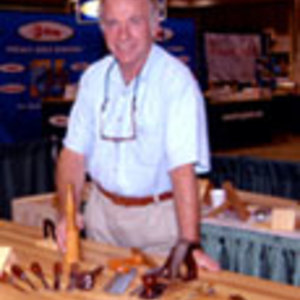Making a Drawer with Half-Blind Dovetails
You don't have to sacrifice speed for a hand-cut joint
Synopsis: Half-blind dovetails are no more difficult to cut than through dovetails. Frank Klausz prefers not to let the joint show through on the face of a piece, so he uses half-blind dovetails on drawers. After meticulous preparation that includes assessing and marking the wood for grain pattern and growth rings, he marks his stock before cutting the pins and tails. Multiple photographs illustrate his work sequence, how he chisels the joints and clamps them, and how to fix imperfect fits.
When I make drawers, I use half-blind dovetails to join the drawer front to the sides. I’m a traditionalist and prefer not to let the joint show through on the face of a piece. To enhance the look of the joinery when the drawer is pulled open, I use two contrasting woods on my drawers, such as walnut for the front and white ash for the sides and back.
Once I’ve selected the wood, dimensioned it and cut it to size, I mark each board to indicate which edge is up, what part of the drawer it is (left side, right side or back) and which face is outside. I look at the grain pattern and growth rings, and I make sure the inside of the tree is on the outside of my work. Then I cut a groove near the bottom of the drawer sides and front with a couple of passes on my tablesaw, making it a snug fit for the drawer bottom. I test the fit with a piece of scrap the same thickness as the drawer bottom. I rip the drawer back to the top of the groove, so I can slide the drawer bottom in after assembly.
From Fine Woodworking #100
For the full article, download the PDF below:
Fine Woodworking Recommended Products

Festool DF 500 Q-Set Domino Joiner

Pfiel Chip Carving Knife

Bessey EKH Trigger Clamps























Log in or create an account to post a comment.
Sign up Log in